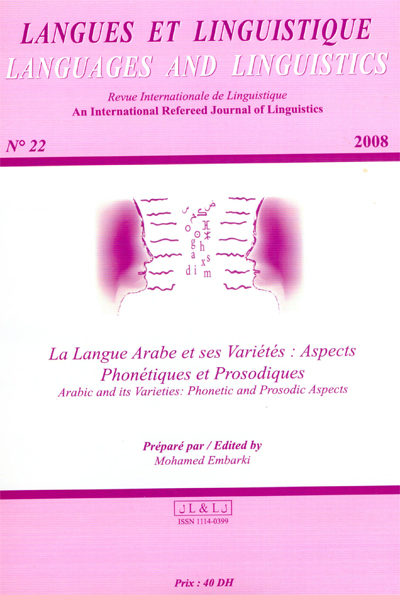Pre-pausal devoicing and glottalisation
in varieties of the South-Western Arabian Peninsula
pp. 17-38
Janet Watson and Yahya AsiriAbstract
The second
article offers a very interesting study about an unsuspected feature of
speech production in Arabic area. The article entitled “Pre-pausal devoicing
and glottalisation in varieties of the South-Western Arabian
Peninsula”, presented by Janet Watson and Yahya Asiri, is concerned with the
phonetic aspect of devoicing, present in a wide range of modern Arabic
dialects. The authors noticed, throughout a vast number of Arabic dialects,
that devoicing and glottalisation occurr in a specific prosodic position,
i.e., word or utterance-final positions. Therefore, these two aspects,
devoicing and glottalisation, appear to be shaped by a bundle of constraints
which is twofold, i.e.,. phonological/phonetic. Janet Watson and Yahya Asiri
restricted their study to the phonetic cues of these aspects. The authors
selected a very interesting area, from the dialectal point of view, i.e.,
Yemen, that should show many remarkable cases of pre-pausal devoicing and
glottalisation. They compared data from San’ani Arabic with the southern
Asiri Arabic dialect of Rijāl Alma‘ and Mehriyōt which is an eastern dialect
of the modern south Arabian language, Mehri, spoken in Yemen. The findings
indicate that devoicing occurs with obstruents and glottalisation with
plosives in the three varieties under study. Nasal and lateral sonorants,
completely glottalised in San’ani Arabic, are only partially devoiced in
Rijāl Alma‘ and Mehriyōt. However, they are neither pre-glottalised nor
released in Rijāl Alma‘. These findings are in accordance with Maddieson’s
(1984) implicational relationship between glottalic or laryngealized stops
and laryngealized sonorants. |
